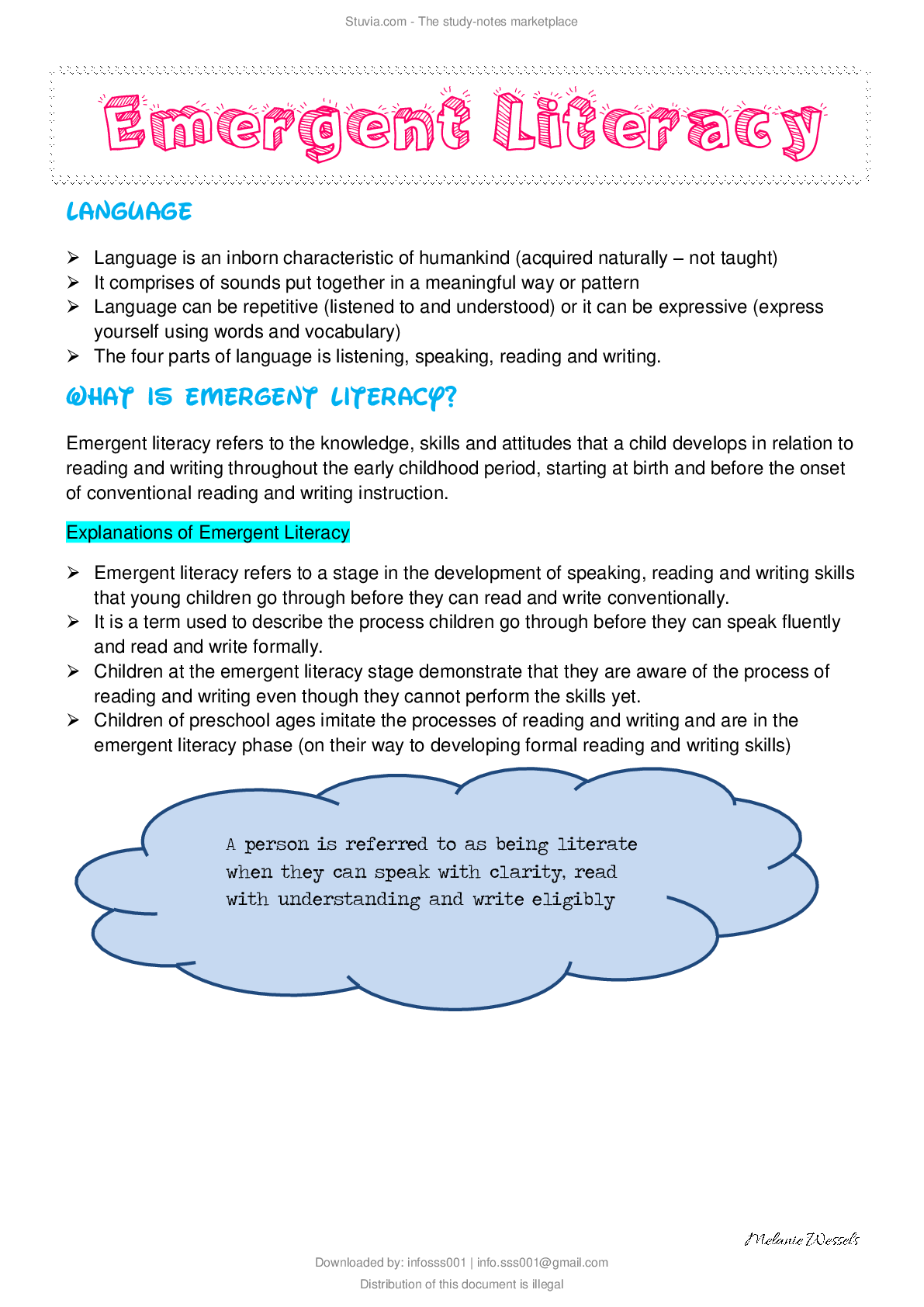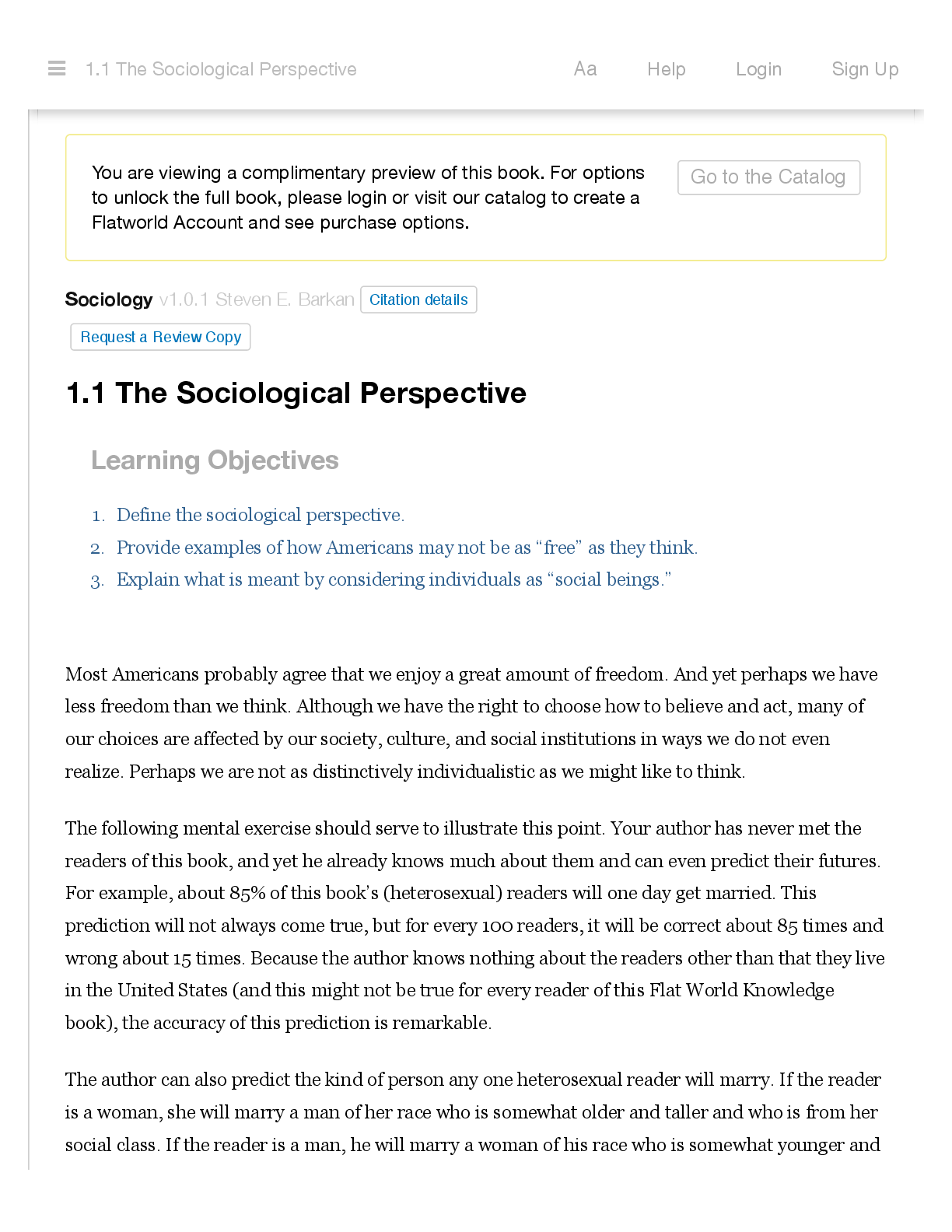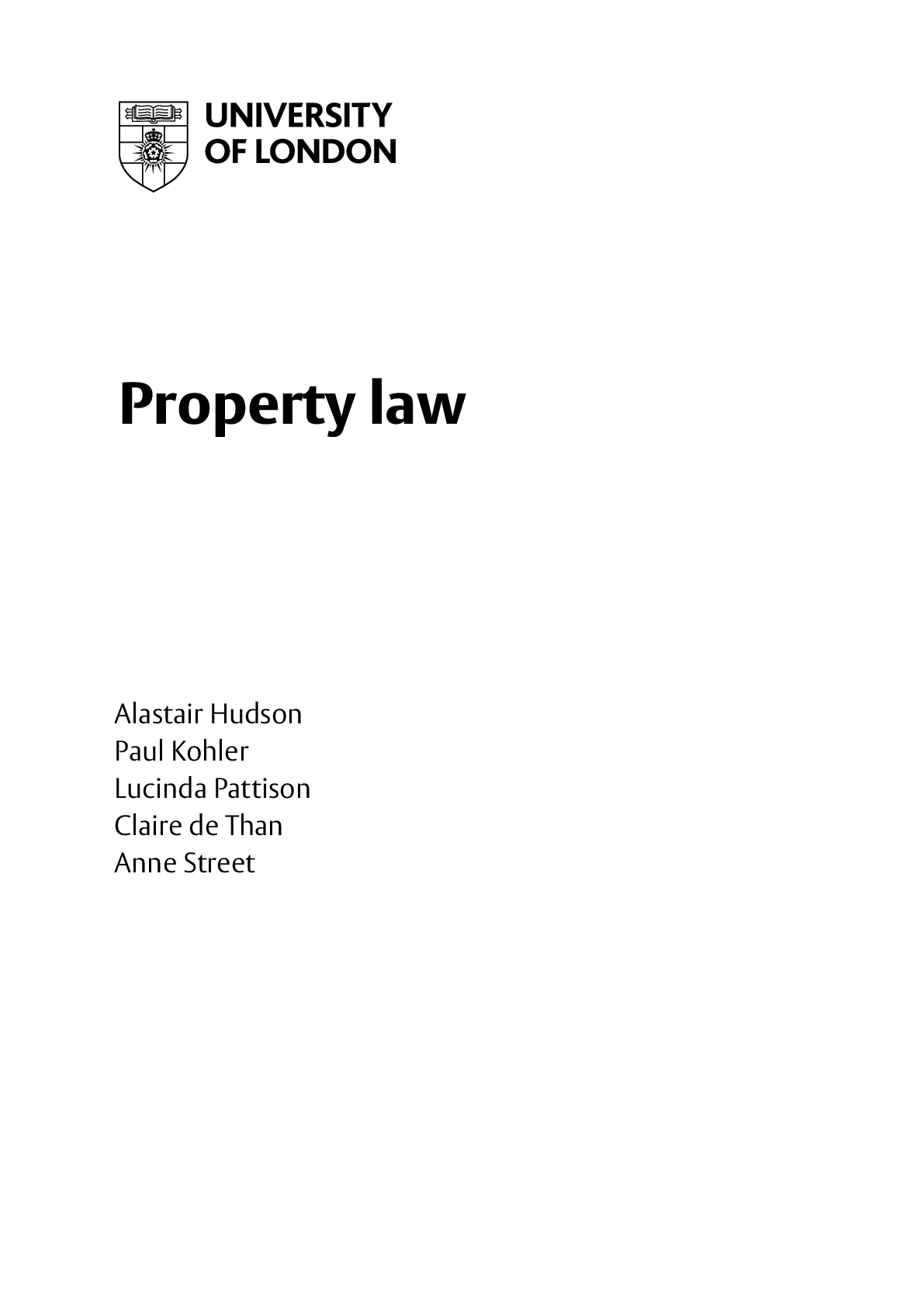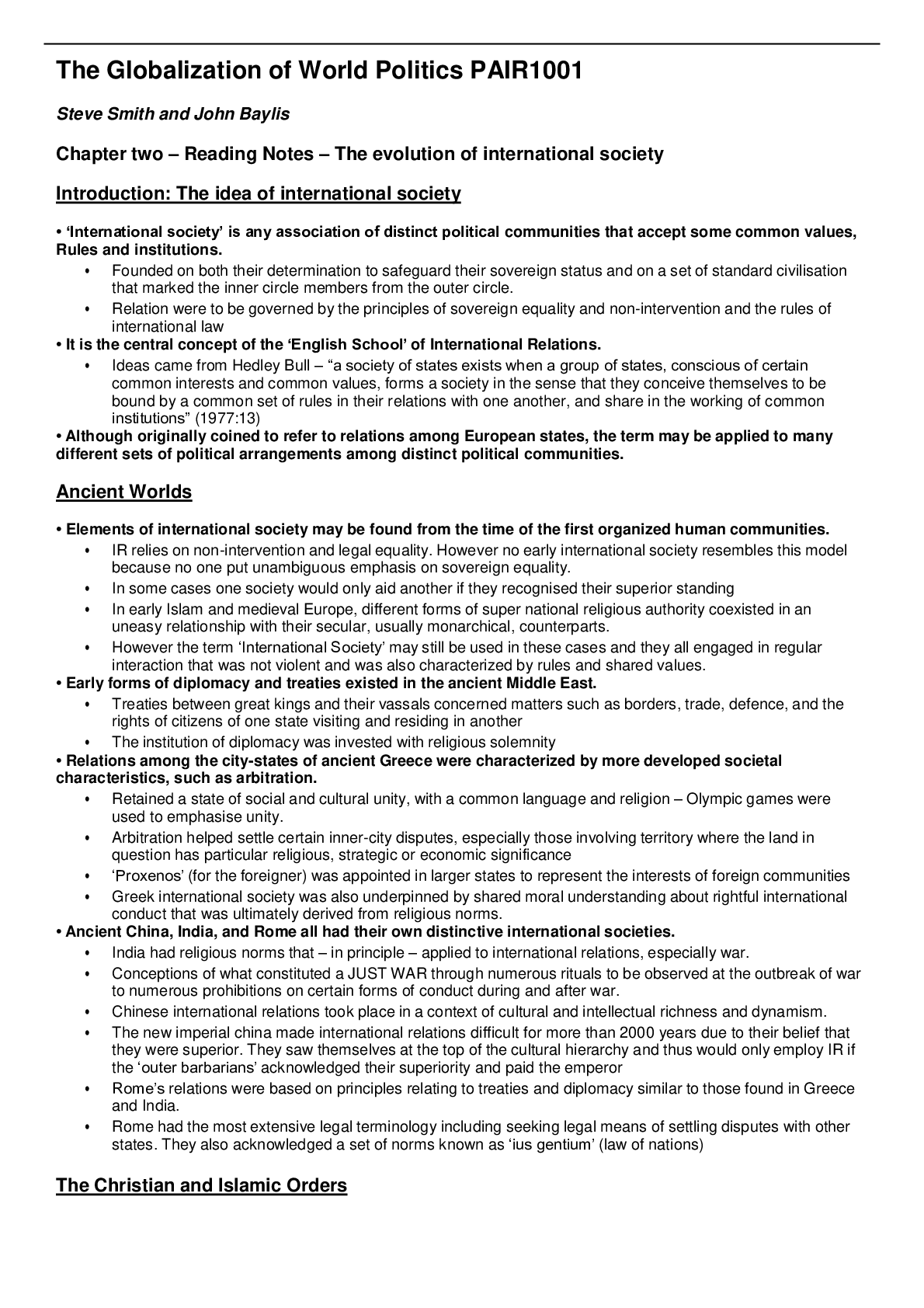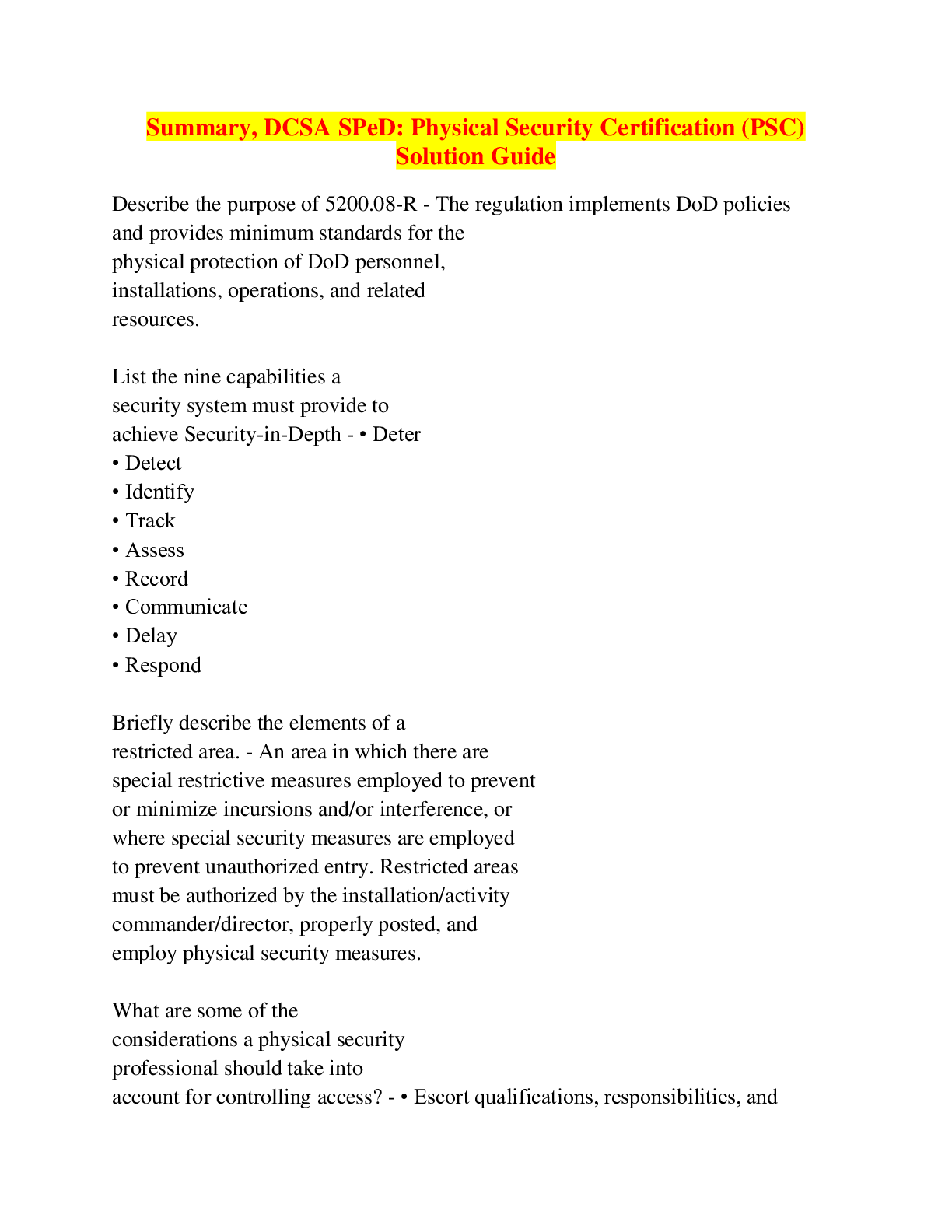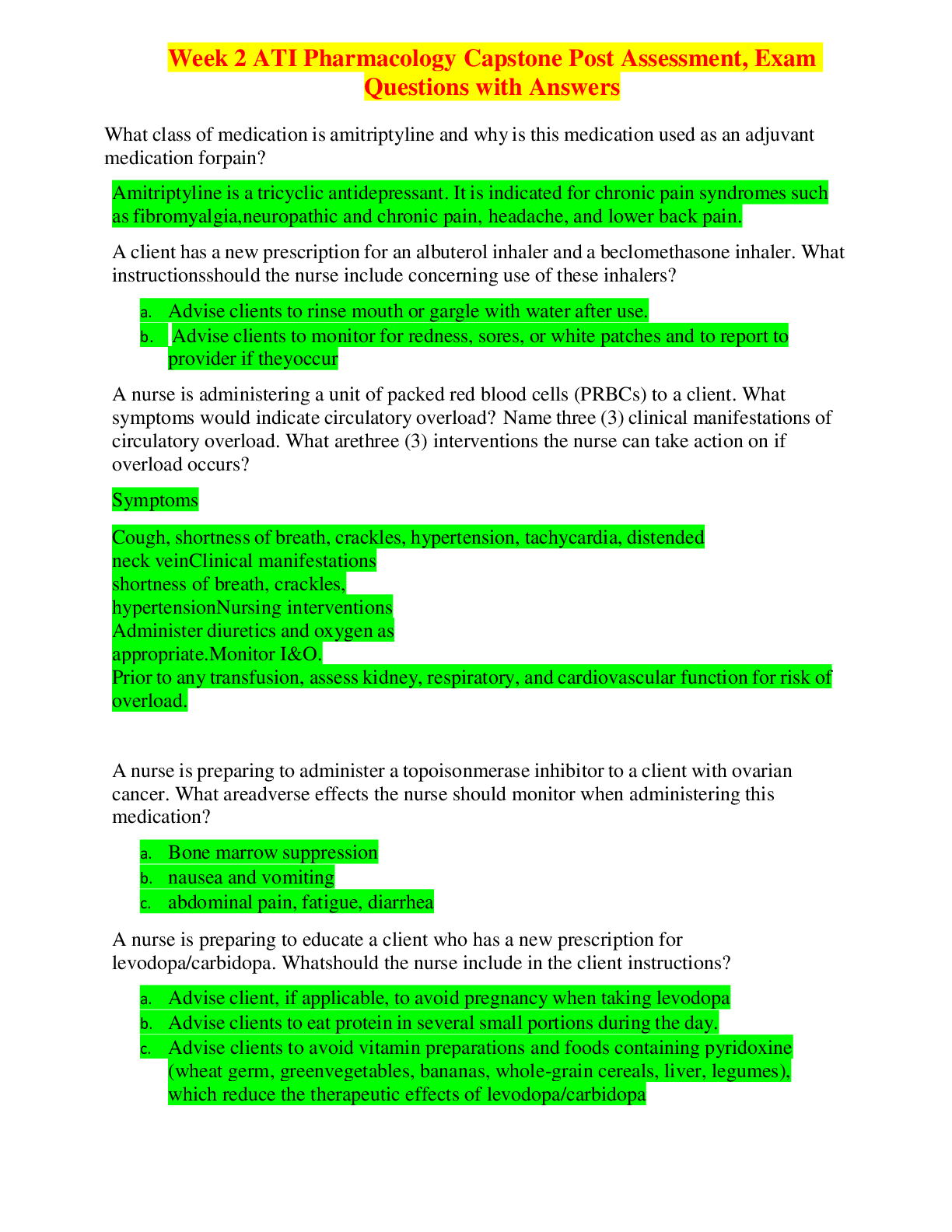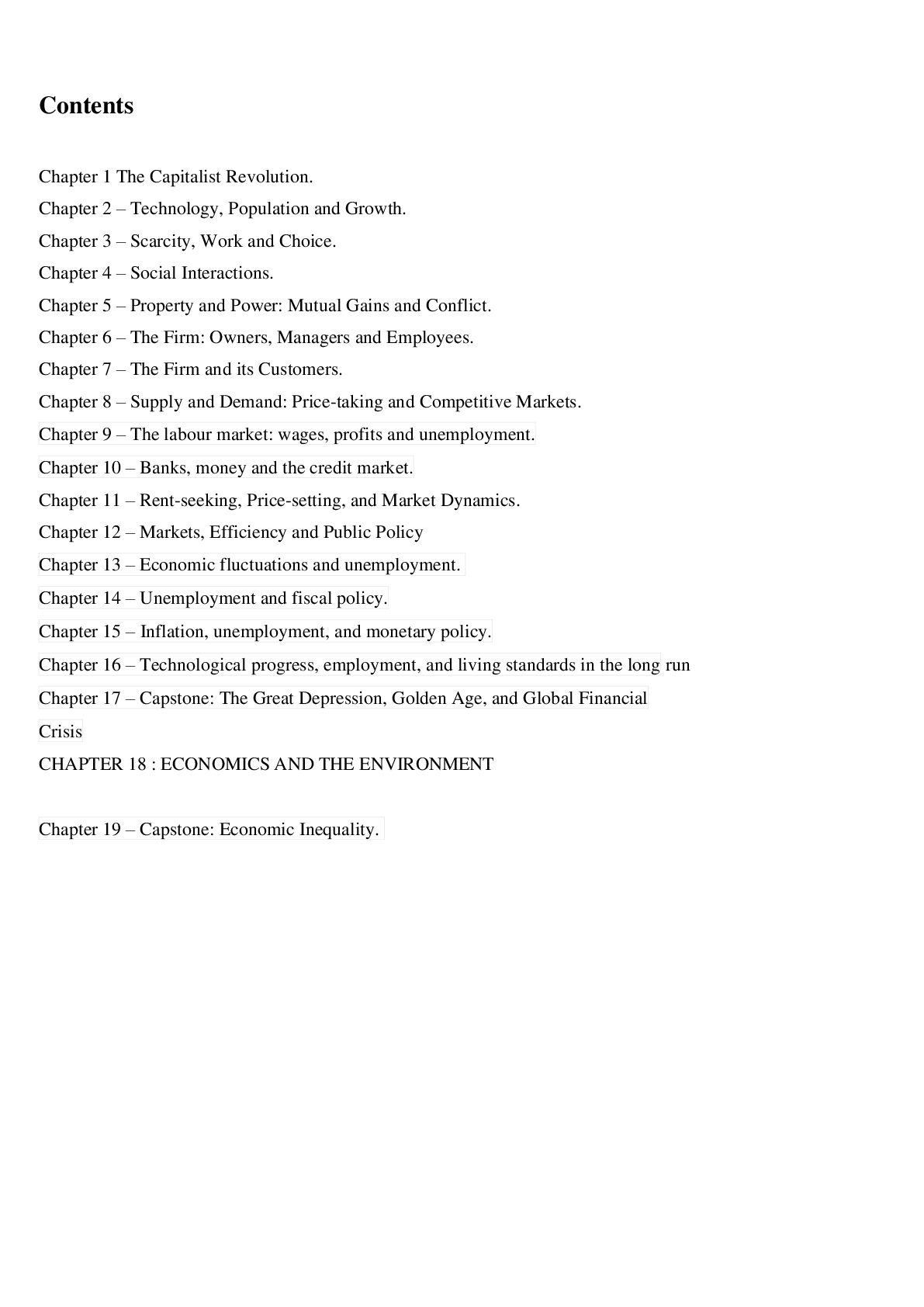*NURSING > Summary > (Chapter Review) Chapter 13 - Bipolar and Related Disorders (Questions, Answers & Elaborations) A+ (All)
(Chapter Review) Chapter 13 - Bipolar and Related Disorders (Questions, Answers & Elaborations) A+
Document Content and Description Below
Which room placement would be best for a client experiencing a manic episode of bipolar disorder? 1. A shared room with a client with dementia 2. A single room near the unit activities area 3. A si ... ngle room near the nurses' station 4. A shared room away from the unit entrance Which behavior would be most characteristic of a client during a manic episode of bipolar disorder? 1. Going rapidly from one activity to another 2. Taking frequent rest periods and naps during the day 3. Being unwilling to leave home to see other people 4. Watching others intently and talking little The nurse can expect a client demonstrating typical manic behavior to be attired in clothing that is 1. Dark colored and modest. 2. Colorful and outlandish. 3. Compulsively neat and clean. 4. Ill-fitted and ragged. A bipolar client tells the nurse, "I have the finest tenor voice in the world. The three tenors who do all those TV concerts are going to retire because they can't compete with me." The nurse would make the assessment that the client is displaying 1. Flight of ideas. 2. Distractibility. 3. Limit testing. 4. Grandiosity. When a client reports that lithium causes an upset stomach, the nurse suggests taking the medication: 1. With meals. 2. With an antacid. 3. 30 minutes before meals. 4. 2 hours after meals. An outcome for a manic client during the acute phase that would indicate that the treatment plan was successful would be that the client 1. Reports racing thoughts. 2. Is free of injury. 3. Is highly distractible. 4. Ignores food and fluid. A person who has numerous hypomanic and dysthymic episodes can be assessed as demonstrating characteristics of: 1. Bipolar II disorder. 2. Bipolar I disorder. 3. Cyclothymia. 4. Seasonal affective disorder. The first-line drug used to treat mania is: 1. Lithium carbonate (Lithium). 2. Carbamazepine (Tegretol). 3. Lamotrigine (Lamictal). 4. Clonazepam (Klonopin). When a hyperactive manic client expresses the intent to strike another client, the initial nursing intervention would be to: 1. Question the client's motive. 2. Set verbal limits. 3. Initiate physical confrontation. 4. Prepare the client for seclusion. When a client experiences four or more mood episodes in a 12-month period, the client is said to be 1. Dyssynchronous. 2. Incongruent. 3. Cyclothymic. 4. Rapid cycling. A desirable short-term goal for the nursing diagnosis Defensive coping related to biochemical changes as evidenced by aggressive verbal and physical behaviors would be 1. Making no attempts at self-harm within 12 hours of admission. 2. Sleeping soundly for 12 of the next 24 hours. 3. Willingly taking prescribed medication as offered by staff within 24 hours of admission. 4. Demonstrating psychomotor retardation associated with sedation from prescribed medication within 6 hours of admission. What action should the nurse take on learning that a manic client's serum lithium level is 1.8 mEq/L? 1. Withhold medication and notify the physician. 2. Continue to administer medication as ordered. 3. Advise the client to limit fluids for 12 hours. 4. Advise the client to curtail salt intake for 24 hours. When the wife of a manic client asks about genetic transmission of bipolar disorder, the nurse's answer should be predicated on the knowledge that 1. No research exists to suggest genetic transmission. 2. Much depends on the socioeconomic class of the individuals. 3. Highly creative people tend toward development of the disorder. 4. The rate of bipolar disorder is higher in relatives of people with bipolar disorder. To plan care for a manic client the nurse must consider that lithium cannot be started until 1. The physical examination and laboratory tests are analyzed. 2. The initial doses of antipsychotic medication have brought behavior under control. 3. Seclusion has proven ineffective as a means of controlling assaultive behavior. 4. Electroconvulsive therapy can be scheduled to coincide with lithium administration. Which side effects of lithium can be expected at therapeutic levels? 1. Fine hand tremor and polyuria 2. Nausea and thirst 3. Coarse hand tremor and gastrointestinal upset 4. Ataxia and hypotension The priority nursing diagnosis for a hyperactive manic client during the acute phase is 1. Risk for injury. 2. Ineffective role performance. 3. Risk for other-directed violence. 4. Impaired verbal communication. A desired outcome for the maintenance phase of treatment for a manic client would be that the client will 1. Exhibit optimistic, energetic, playful behavior. 2. Adhere to follow-up medical appointments. 3. Take medication more than 50% of the time. 4. Use alcohol to moderate occasional mood "highs." A bipolar client whose continuing phase treatment consists of lithium therapy and cognitive-behavioral therapy may become noncompliant with medication. Which factor would be of least concern to the nurse developing a psychoeducation plan to foster compliance? 1. The side-effects are unpleasant. 2. The voices tell the client to stop taking it. 3. The client prefers to feel "high" and energetic. 4. The client feels well and denies the possibility of recurrence. An acute phase nursing intervention aimed at reducing hyperactivity is redirecting the client to: 1. Write in a diary. 2. Exercise in the gym. 3. Direct unit activities. 4. Orient a new client to the unit. 5. Write in a diary. A manic client tells a nurse "Bud. Crud. Dud. I'm a real stud! You'd like what I have to offer. Let's go to my room." The best approach for the nurse to use would be: "What an offensive thing to suggest!" "I don't have sex with clients." "It's time to work on your art project." "Let's walk down to the seclusion room." "It's time to work on your art project." Which of the following describe the symptoms of the manic phase of bipolar disorder? (select all that apply): 1. Excessive energy 2. Fatigue and increased sleep 3. Low self-esteem 4. Pressured speech 5. Purposeless movement 6. Racing thoughts 7. Withdrawal from environment 8. Distractibility Which of the following is true of the relationship between bipolar disorder and suicide? 1. Patients need to be monitored only in the depressed phase because this is when suicides occur. 2. Suicide is a serious risk because nearly 20% of those diagnosed with bipolar disorder commit suicide. 3. Patients with bipolar disorder are not considered high risk for suicide. 4. As long as patients with bipolar disorder adhere to their medication regimen, there is little risk for suicide. Tyler is a 31-year-old patient admitted with acute mania. He tells the staff and the other patients that he is on a secret mission given to him by the President of the United States to monitor citizens for terrorist activity. He states, "I am the only one he trusts, because I am the best!" For documentation purposes you know that this behavior is referred to as: 1. Unpredictability. 2. Rapid cycling. 3. Grandiosity. 4. Flight of ideas. Tyler's nursing care plan has several nursing diagnoses listed. List the nursing diagnosis to the level of priority (1 to 4): 1. Self-care deficient, bathing and hygiene. 2. Deficient knowledge. 3. Risk for injury. 4. Non-adherence. Tyler is being discharged home to his family. Which of the following is important teaching to include for the patient and the family to recognize possible signs of impending mania? 1. Increased appetite 2. Decreased social interaction 3. Increased attention to bodily functions 4. Decreased sleep [Show More]
Last updated: 2 years ago
Preview 1 out of 7 pages
 Chapter 13 - Bipolar and Related Disorders.png)
Buy this document to get the full access instantly
Instant Download Access after purchase
Buy NowInstant download
We Accept:

Reviews( 0 )
$13.00
Can't find what you want? Try our AI powered Search
Document information
Connected school, study & course
About the document
Uploaded On
Jan 17, 2023
Number of pages
7
Written in
All
Additional information
This document has been written for:
Uploaded
Jan 17, 2023
Downloads
0
Views
164

.png)
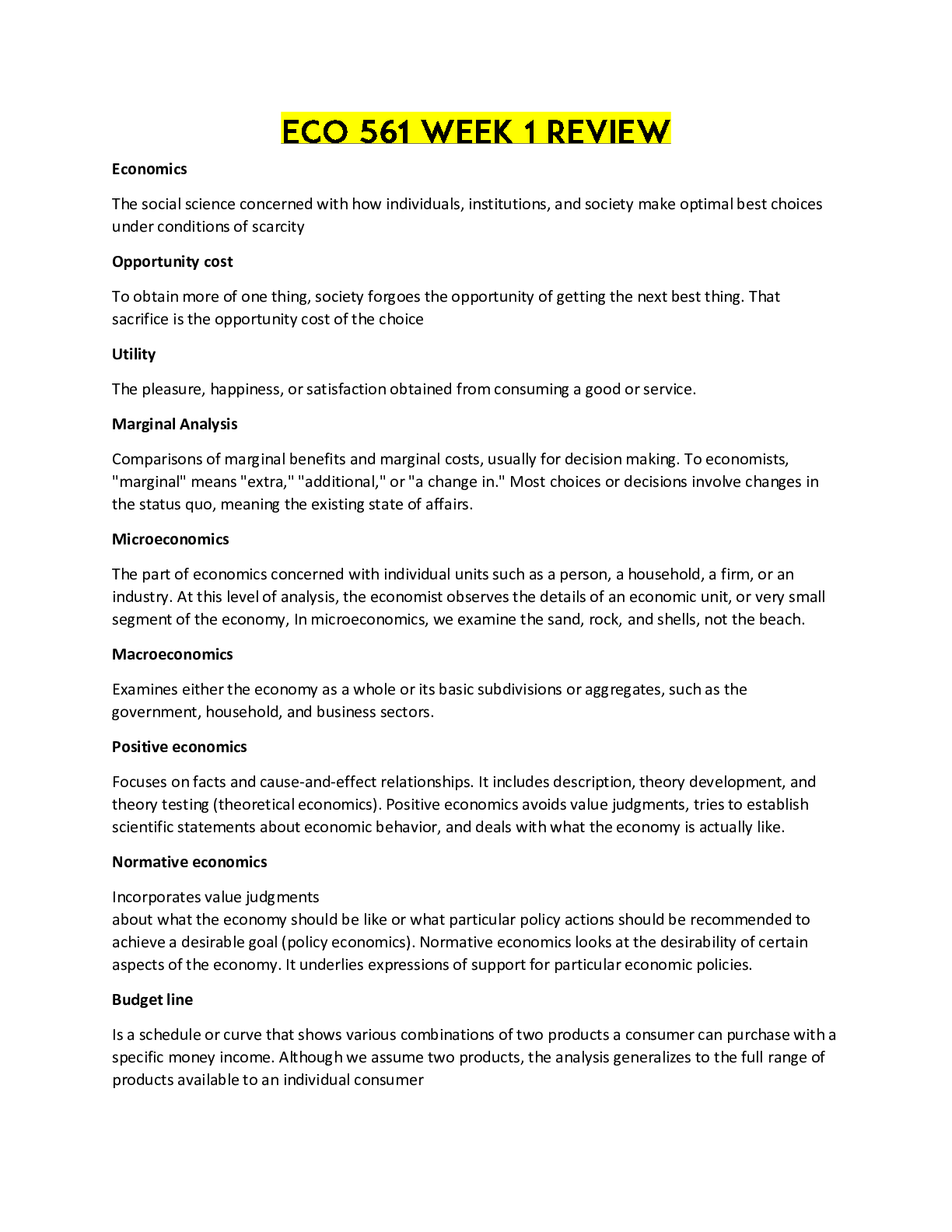


 Chapter 2 - Application of Pharmacology.png)
 Chapter 12 - Mental Health Schizophrenia Spectrum Disorders.png)
 Chapter 22 - Substance-Related and Addictive Disorders [Varcarolis].png)
 Chapter 33 - Diabetes (Q&A).png)
.png)
.png)
